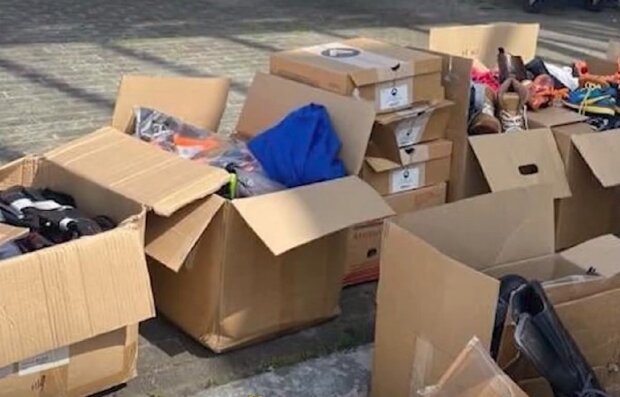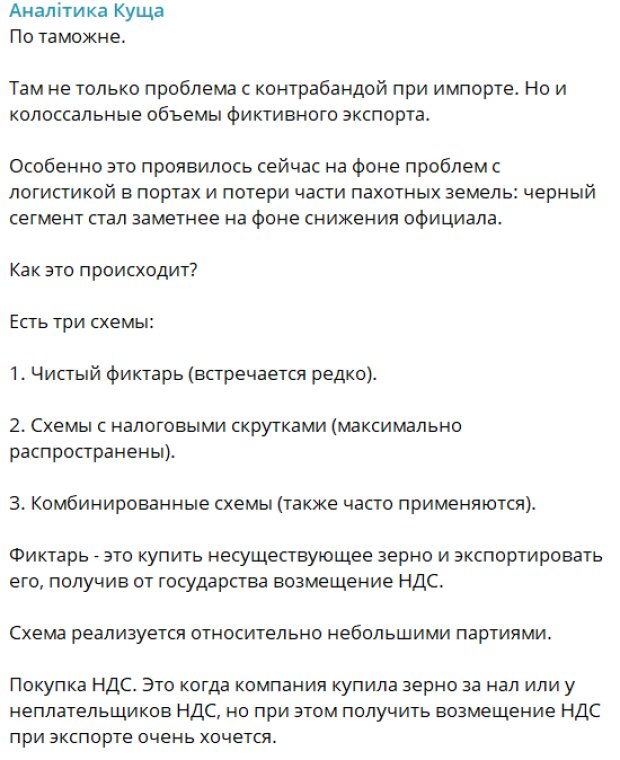Украинский финансовый эксперт Алексей Кущ поделился информацией о работе таможни. По его словам, не только проблема с контрабандой при импорте. Но и колоссальные объемы фиктивного экспорта.
Особенно это проявилось сейчас на фоне проблем с логистикой в портах и потери части пахотных земель: черный сегмент стал заметнее на фоне снижения официала.
Об этом стало известно благодаря небольшой «разведке» от финансового эксперта Алексея Куща

Алексей Кущ рассказал, как это происходит в современных реалиях.
Есть три схемы:
1. Чистый фиктарь (встречается редко).
2. Схемы с налоговыми скрутками (максимально распространены).
3. Комбинированные схемы (также часто применяются).
Фиктарь — это купить несуществующее зерно и экспортировать его, получив от государства возмещение НДС.
Схема реализуется относительно небольшими партиями.
Покупка НДС. Это когда компания купила зерно за нал или у неплательщиков НДС, но при этом получить возмещение НДС при экспорте очень хочется.

Тогда просто покупаются документы на официальную партию зерна у фиктивного продавца, который «скручивает» НДС, например, у импортера, у которого завис налоговый кредит (импортный товар был реализован за нал, а НДС на него при ввозе в Украину был уплачен).
Здесь трансформация «черного зерна» в «белое» и покупка несуществующего налогового кредита по НДС с дальнейшим получением возмещения НДС от государства.
Комбинация — это когда 10 тыс тонн «черного зерна» с помощью покупки доков превращается в 15 тыс тонн «белого зерна» и экспортер получает возмещение НДС за 15 тыс тонн.
Понятно, что без таможни реализовать такую схему невозможно — таможня фиксирует тоннаж. Но если у нас когда-то «подтапливали» суда при загрузке металлом и железной рудой в портах (тоннаж определялся по осадке судна), то что мешает «химичить» сейчас? Особенно, когда масса сгоревшего в портах зерна определяется «на глаз».




